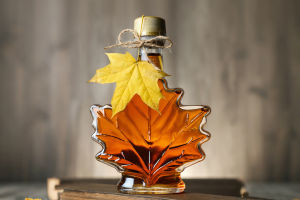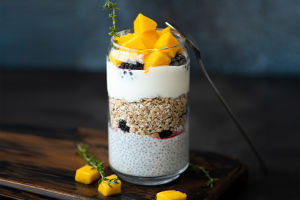Hello lovely Lykkers! Ready to jump in Japan? Tempura is one of Japan's most beloved dishes, known for its light and crispy texture.
This fried delicacy, typically made from a mix of vegetables and seafood, is a treat that can be enjoyed by everyone.
The key to making perfect tempura lies in creating the right batter and ensuring the frying process is done correctly. Below are the essential tips and steps for preparing tempura that is both light and crispy, with minimal oil absorption.
The Ingredients for the Tempura Batter
To create the perfect tempura batter, it's crucial to choose fresh, high-quality ingredients. In Japan, tempura is traditionally made with seafood, especially shrimp, and vegetables like zucchini, bell peppers, pumpkin, and lotus root. The batter should be light, crispy, and non-greasy.
Here are the ingredients needed for the batter:
- 1 egg yolk
- 100 ml cold sparkling water
- 100 g sifted flour
- A pinch of salt
Preparing the Tempura Batter
Start by whisking the egg yolk together with the cold sparkling water. Once combined, sift the flour and gradually add it to the mixture, stirring gently to avoid overmixing. The goal is to create a lumpy batter, which will help achieve the desired crispy texture. Add a pinch of salt to taste, and then place the batter in the refrigerator to rest for about 15 minutes before frying.
Frying the Tempura
Once the vegetables and seafood are prepared, it's time to fry them. Slice the vegetables into thick pieces, and if using shrimp, make sure they are properly cleaned and deveined. Dust each piece of seafood or vegetable in flour before dipping it into the batter, ensuring it's evenly coated.
Next, heat a generous amount of vegetable oil in a pan, bringing it to around 170°C (340°F). Begin frying the tempura pieces in small batches, ensuring they have enough space to cook evenly. Fry on one side until golden, then flip them over and fry the other side.
A useful tip for a thicker and crunchier batter is to let a few drops of batter fall back into the pan onto the ingredient before frying. This creates additional layers of batter that will crisp up during cooking.
Secrets to Achieving Perfect Tempura
Making tempura may seem easy, but it requires attention to detail. To ensure the batter is crispy, light, and not greasy, here are some professional tips:
1. Keep Ingredients Cold
For the crispiest tempura, use cold ingredients. This includes both the batter and the utensils used to prepare it. Metal bowls should be chilled before use, as cold utensils help prevent the batter from becoming too heavy or greasy.
2. Use a Skimmer for Best Results
While frying, a skimmer or slotted spoon can help remove any excess batter from the oil. This prevents the batter bits from burning and negatively affecting the flavor of the tempura.
3. Maintain the Oil Temperature
One of the most crucial steps in frying tempura is maintaining the right oil temperature. Ideally, the oil should be between 170°C and 180°C (340°F to 355°F).
If the temperature is too low, the tempura will become soggy, and if it's too high, the batter will burn. To check the temperature, drop a small piece of batter into the oil—if it sinks and then rises to the surface, the temperature is just right. If it sinks straight to the bottom, the oil is too cold; if it floats immediately, it's too hot.
4. Drain Excess Oil
Once fried, it's essential to remove excess oil from the tempura. Use a tempura basket or a slotted spoon to allow the oil to drain away. For even better results, line the bottom of the basket with absorbent paper to help soak up any remaining oil. This ensures the tempura remains light and not greasy.
5. Serve Immediately
Tempura should be served right away while it's still hot and crispy. The longer it sits, the more the batter will lose its crispness. Transfer the tempura to a plate lined with absorbent paper to catch any extra oil, and enjoy the dish while it's at its best.
Tempura is a delightful dish that combines crispy batter with fresh vegetables and seafood. By following a few simple steps and keeping the ingredients cold, the batter light, and the oil at the perfect temperature, anyone can create this crispy delicacy. With these tips and a little practice, tempura will be an enjoyable and impressive dish to serve at any meal. Whether enjoyed as a snack or a main course, tempura is sure to be a crowd-pleaser!


